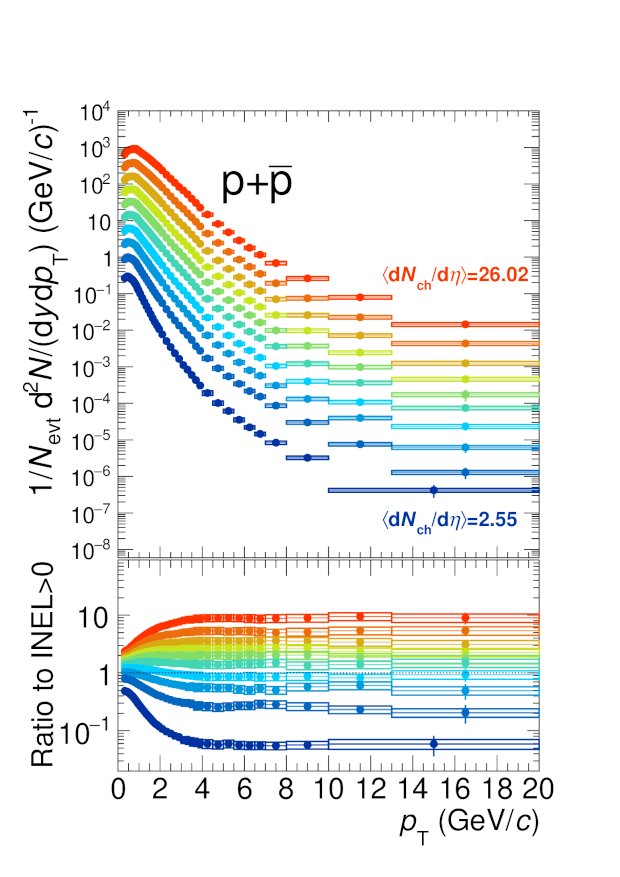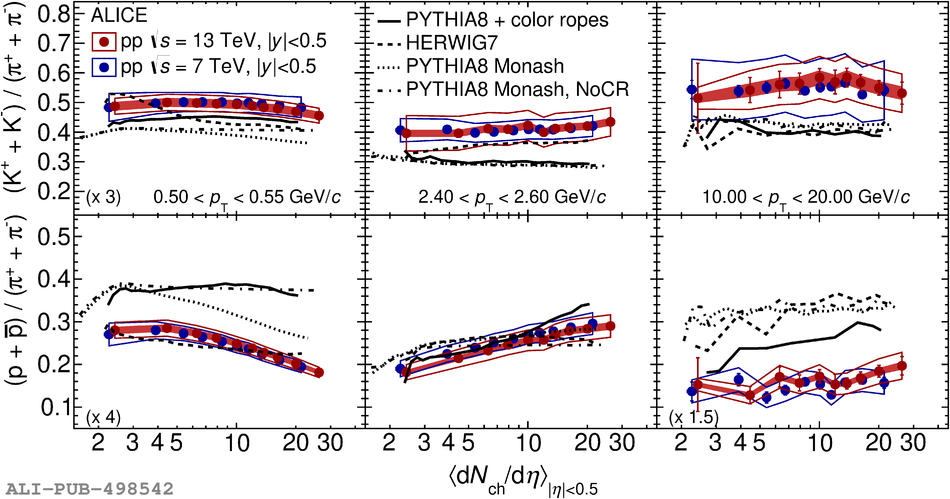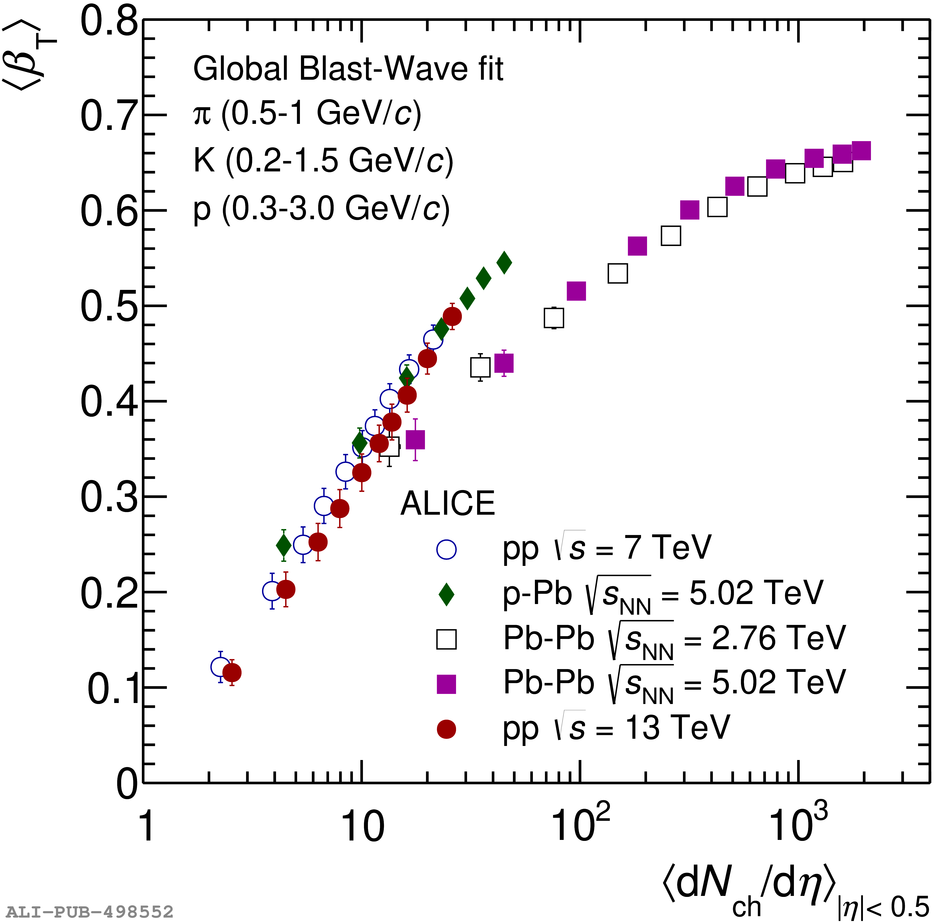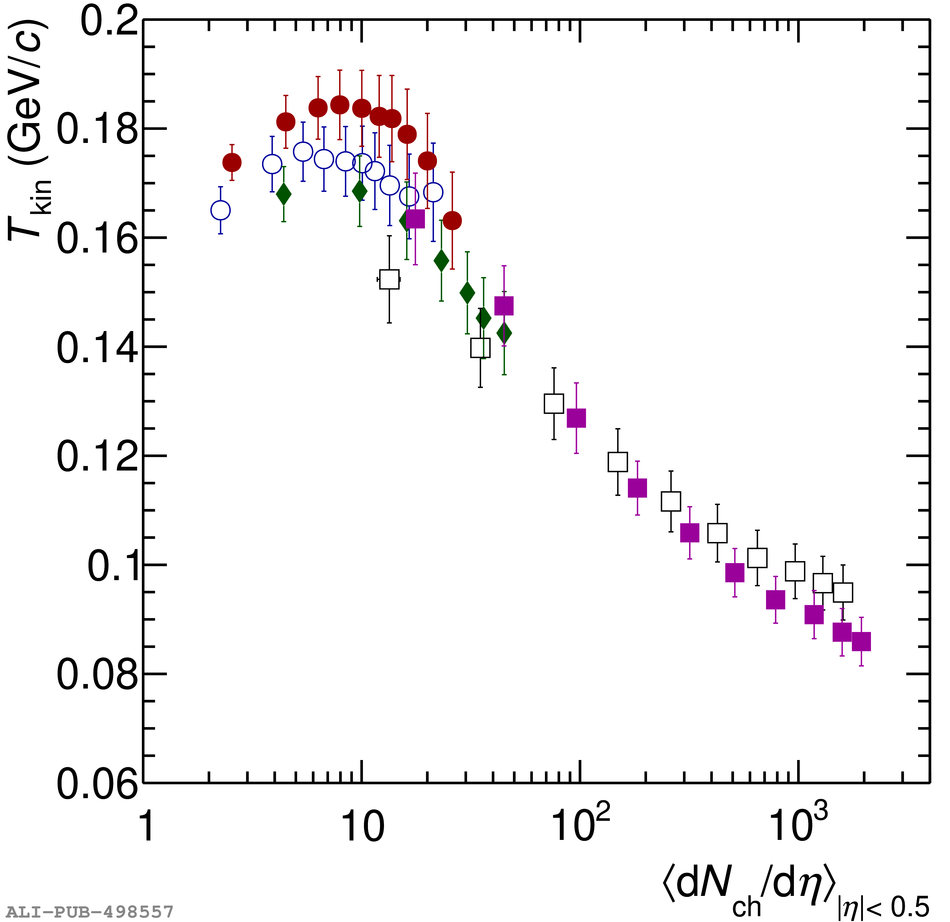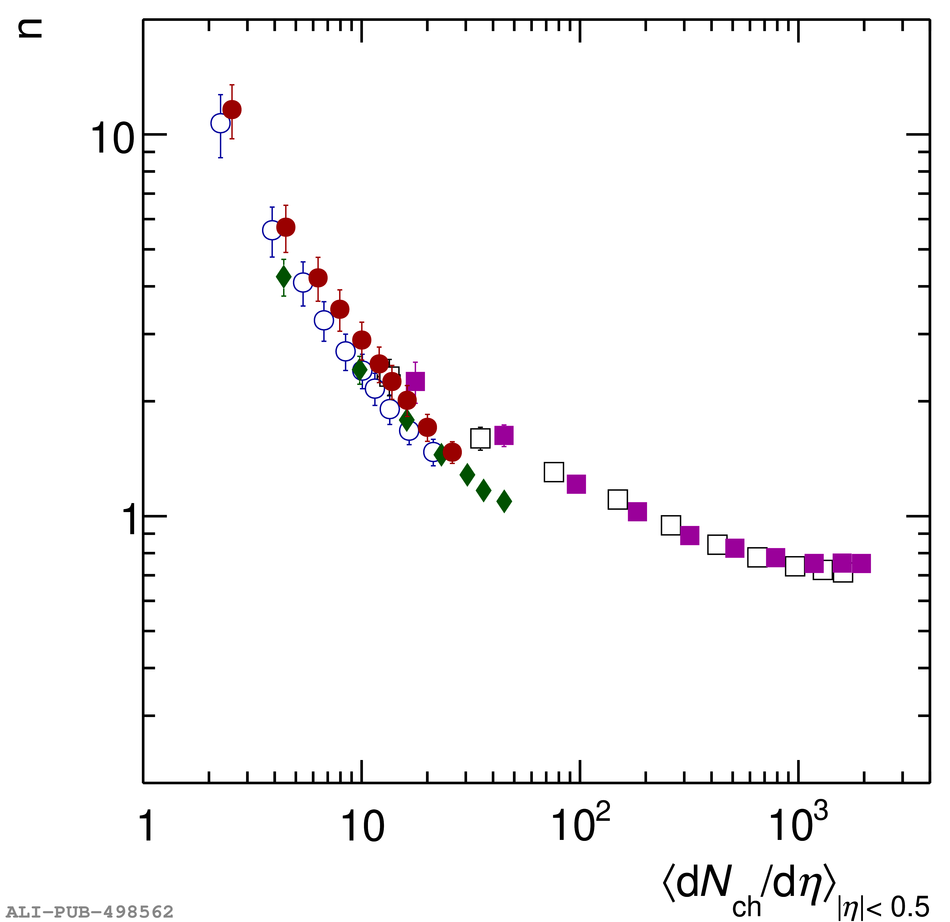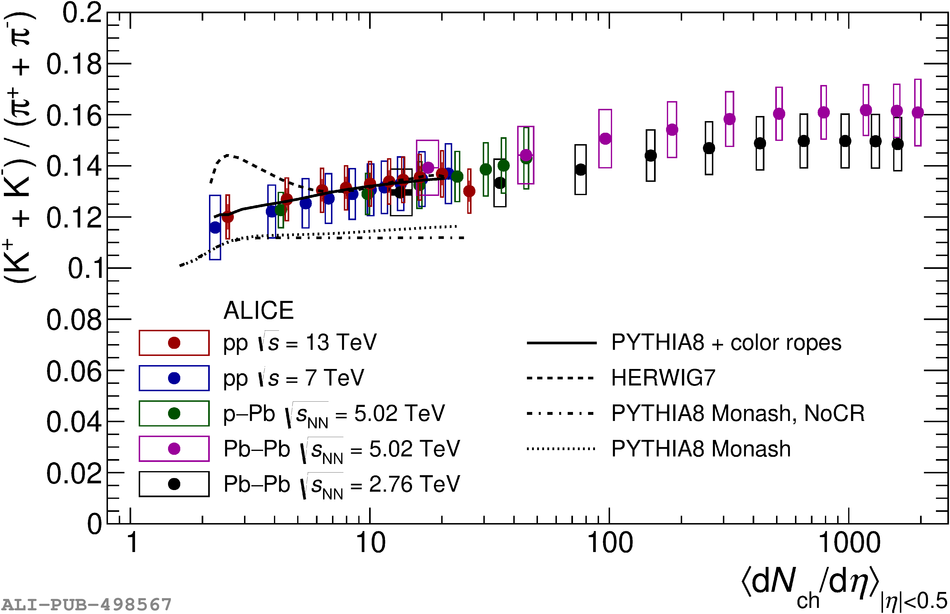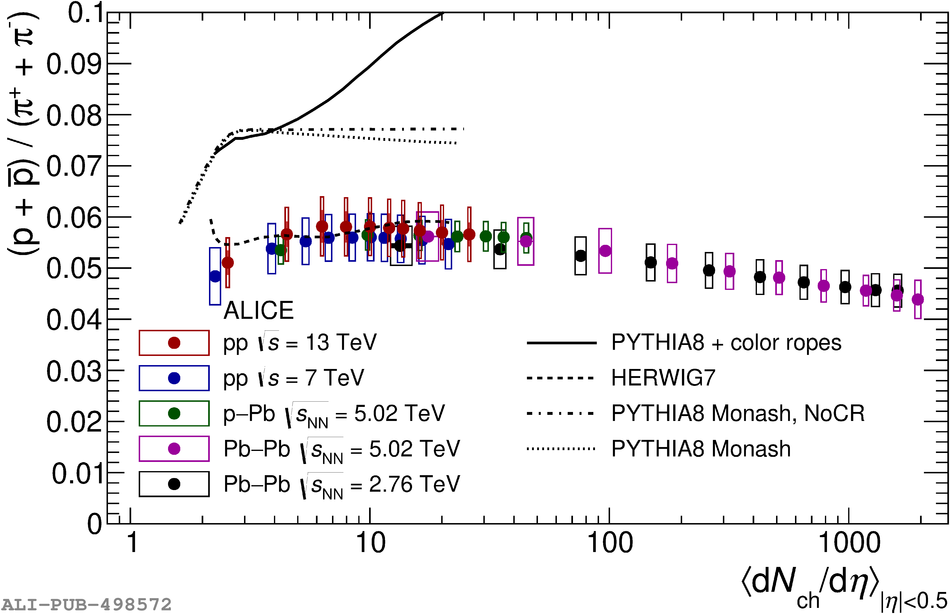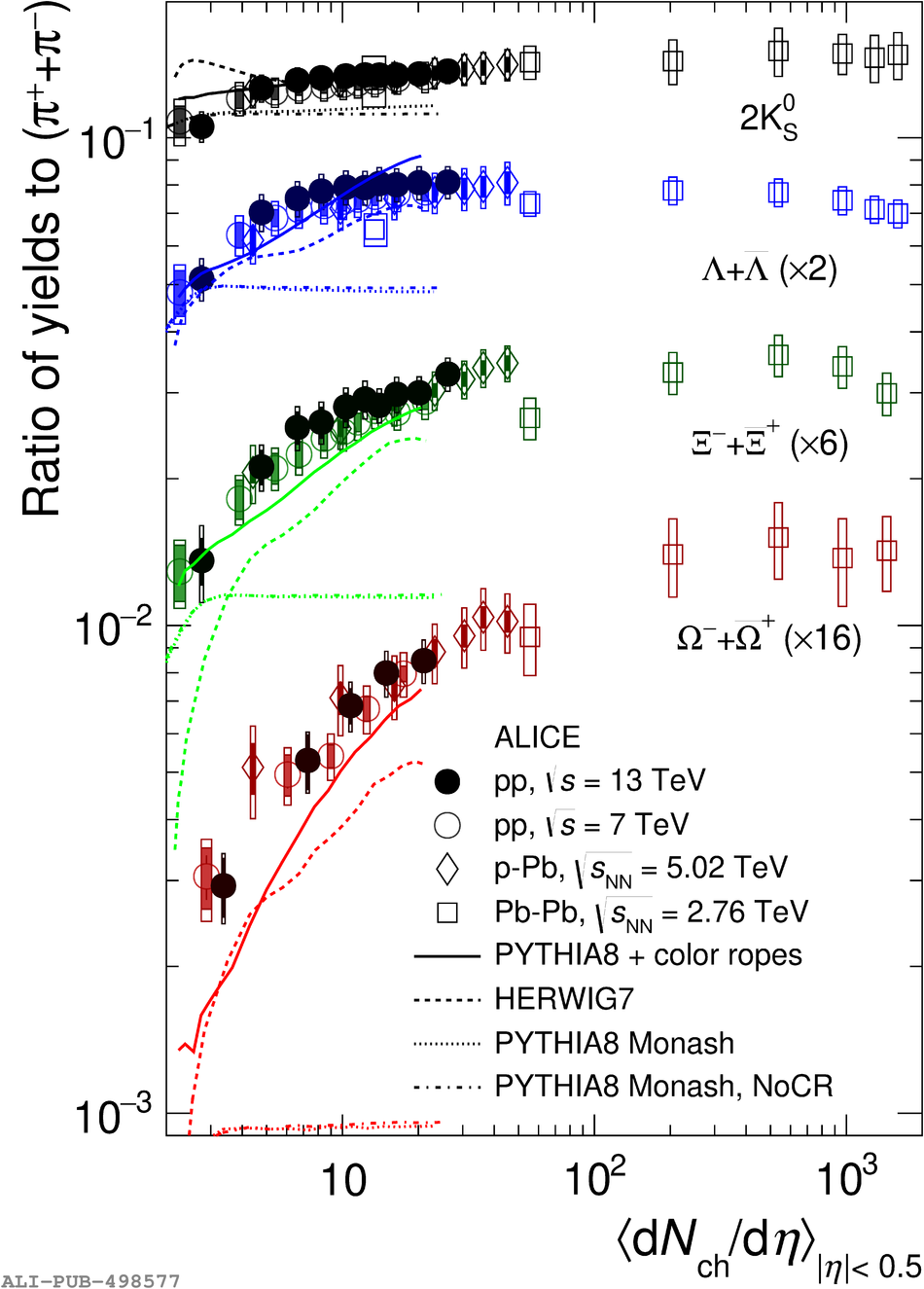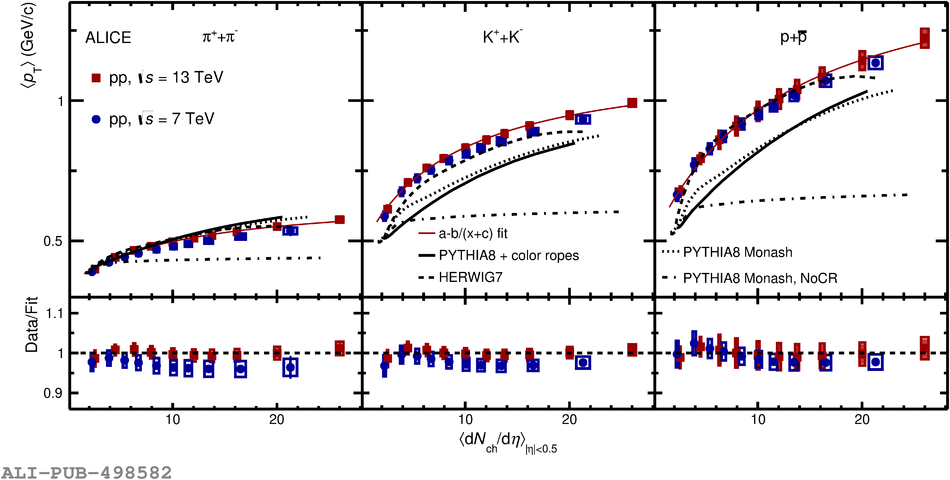This paper presents the measurements of $\pi^{\pm}$, $\rm{K}^{\pm}$, $\rm{p}$ and $\bar{\rm{p}}$ transverse momentum ($p_{\rm{T}}$) spectra as a function of charged-particle multiplicity density in proton-proton (pp) collisions at $\sqrt{s}$ = 13 TeV with the ALICE detector at the LHC. Such study allows us to isolate the center-of-mass energy dependence of light-flavour particle production. The measurements reported here cover a $p_{\rm{T}}$ range from 0.1 GeV/$c$ to 20 GeV/$c$ and are done in the rapidity interval $|y|<~0.5$. The $p_{\rm{T}}$-differential particle ratios exhibit an evolution with multiplicity, similar to that observed in pp collisions at $\sqrt{s}$ = 7 TeV, which is qualitatively described by some of the hydrodynamical and pQCD-inspired models discussed in this paper. Furthermore, the $p_{\rm{T}}$-integrated hadron-to-pion yield ratios measured in pp collisions at two different center-of-mass energies are consistent when compared at similar multiplicities. This also extends to strange and multistrange hadrons, suggesting that, at LHC energies, particle hadrochemistry scales with particle multiplicity the same way under different collision energies and colliding systems.
Eur. Phys. J. C 80 (2020) 693
HEP Data
e-Print: arXiv:2003.02394 | PDF | inSPIRE
CERN-EP-2020-024



